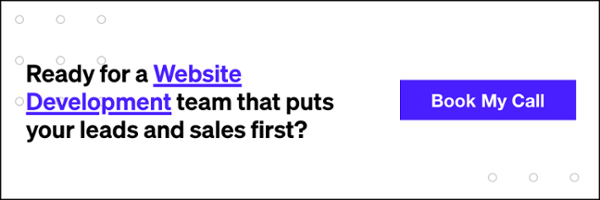How to Project Manage a Website Build
Custom website builds are big, complex, and highly technical projects, that with a little bit of extra care and attention to detail within the project planning, can be project managed by anyone. Our digital marketing agency has established a set of key areas where the project manager has the control to make a website build success with the proper project plan. Follow along for how to project manage a website build from a website design perspective.
Kickoff and Discovery
So you’ve sold a big website project, how does your project team start? The kickoff and discovery are going to be the most important for the project manager to set the web design project up for success. Without a detailed and extensive discovery phase, the remainder of the project is riddled with unnecessary guessing, falling short of client expectations, and playing catch up on the client requirements. It’s the project manager’s job to ensure the requirements gathering not only goes smoothly, but also stays organized in a way that’s useful for the rest of the project team when it comes to project tasks and staying aligned within the project schedule.
Keys to a successful kickoff and discovery when managing projects:
Welcome email and pre-kickoff
Goal: Complete the questionnaire and get enough information to tailor the Q&A to get conversation going around their company for the client kickoff
Send your client a website design survey that begins the basic information gathering around the design brief: Who is the main point of contact (POC)? Who are the additional stakeholders? What brand materials do they have that need to be used? Who are their competitors? Keep this high level as to not overwhelm your clients with a 30- minute questionnaire before you’ve even spoken to them
Have an internal kickoff with your team first to ensure everyone has a chance to ask the questions they need to ask regarding any task within the website project plan
The kickoff meeting
Goal: High-level project goal from the client, a sense of the brand, get them talking about the brand and product/service offering
Get them talking about their company in their own words and think about their brand in a way they may not have before
Deep dive discovery call
Discuss the sales cycle, determine the decision makers on the consumer side, and determine the influencers of those decision makers. This is going to put you in the shoes of their main audience(s) and buyer personas
Client Communications
When are you speaking to your clients?
Is it only when you need something from them? Is it only when you have something to deliver? As the web project manager, make sure they hear from you at least once a week, regardless of the deliverables and regardless if they respond.
How often do your clients proactively hear from you?
If they only hear from you when they reach out, you aren’t managing the project. Send your clients an email every Monday letting them know what your team is doing and what you are expecting of them. Keep client participation and collaboration high to ensure they know they are being heard and that you are there as an extension of their team.
Leaning into your expertise
The client is the expert in their industry, but as a project manager you are the expert in the product being delivered. Lean into that expertise when speaking with your clients and have the data to back it up. Let your UX designers present their designs so that the information comes straight from the expert. Let your developers participate in development functionality meetings and be client facing to establish your company’s credibility as the expert in your space.
Getting Through Development
Launching a website after the staging site is ready can sometimes drag out due to the finality that it entails. Make this process smoother and less daunting to your clients by utilizing bug/feedback collecting tools like Bugherd with your clients to enable clear communication about new website changes leading up to launch.
Once your clients are set up on Bugherd following the initial delivery of the staging site, set up a daily 15-minute stand up with them to discuss their priorities of the day. What you may not have visibility on is the amount of internal stakeholders your POC is having to speak to, and you can alleviate this stress by discussing their high priority items with them daily. If available, have your developer join as well, as cutting out the middleman can really speed things up.
Other Quick Tips
- Organization is everything. Establish patterns so that your team always knows where to find the same information for every project. Whether that’s a templated project management board, consistent folder structures, and consistent styles of communication, your team will appreciate it.
- Use collaborative documents (like Google Drive) as much as possible, whether that’s with your clients and/or your internal team.
- Get written sign-off on phases from your clients before moving on to the next one. Wireframes dictate designs, so make sure your clients know that they are signing off on one phase in order to inform the next so that you don’t run into scope creep.
- Dig into feedback about the why behind likes and dislikes. Teach your clients how to better feedback givers.
- Own up to mistakes and move on from them, and don’t repeat them. Everyone makes mistakes, but the top performers and best partners don’t repeat them.
Website project management does not end once design is complete. Once your website project design is finalized, your project team should assess feedback and the overall outcome of your project to learn from for future projects. As a project manager, the project is your responsibility from start to finish, and then some. For more information on other website development services, contact Power Digital today!


















